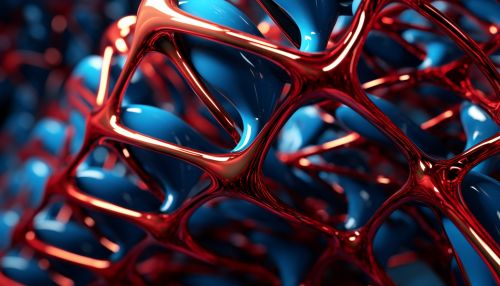Halorhodopsin
Overview
Halorhodopsin is a type of protein found in the membranes of certain halophilic archaea, specifically those of the genus Halobacterium. It functions as a light-driven chloride pump, which is crucial for the survival and function of these organisms in their high-salt environments. Halorhodopsin is part of a larger family of proteins known as rhodopsins, which are characterized by their ability to bind to retinal, a form of vitamin A, and use light energy to perform various cellular functions.


Structure and Function
Halorhodopsin is a seven-transmembrane protein, meaning it spans the cell membrane seven times. The protein has a barrel-like shape, with the retinal molecule located in the center. The retinal is covalently attached to a lysine residue in the seventh transmembrane domain via a Schiff base linkage. The chloride ion binding site is located near the retinal molecule, and is coordinated by several amino acid residues.
When halorhodopsin absorbs a photon of light, the retinal molecule undergoes a conformational change, shifting from an all-trans to a 13-cis configuration. This change triggers a series of events within the protein, ultimately leading to the translocation of a chloride ion from the outside of the cell to the inside. This process is known as active transport, as it moves ions against their concentration gradient, and requires energy in the form of light.
Role in Halophilic Archaea
Halorhodopsin plays a critical role in maintaining the ionic balance within halophilic archaea. These organisms live in extremely high-salt environments, such as salt flats or salt pans, where the concentration of salt can exceed that of seawater by ten times or more. To survive in these conditions, halophilic archaea have evolved a number of adaptations, one of which is the use of light-driven ion pumps like halorhodopsin.
By pumping chloride ions into the cell, halorhodopsin helps to balance the high concentration of potassium ions inside the cell, which is necessary for these organisms to maintain their cellular functions. This process also helps to generate a proton motive force, which can be used to drive the synthesis of adenosine triphosphate (ATP), the cell's main energy currency.
Biotechnological Applications
Due to its unique properties, halorhodopsin has been the subject of much research in the field of optogenetics, a branch of neuroscience that uses light to control neurons. By introducing halorhodopsin into specific neurons, scientists can use light to inhibit these neurons, allowing them to study the effects of turning off specific neural circuits.
In addition to its use in neuroscience, halorhodopsin has also been used in the development of microbial solar cells. These devices use genetically modified organisms that express halorhodopsin to generate electricity from light, offering a potential source of renewable energy.
See Also
Categories
Note: This is a simulated article and may not contain all the information required for a full understanding of the topic. For more detailed information, please refer to a dedicated scientific textbook or a peer-reviewed research article.
